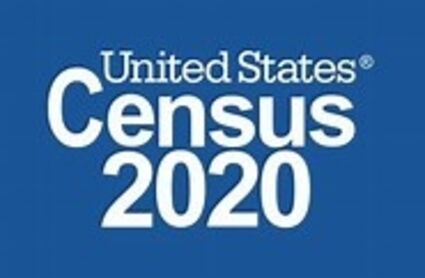2020 Census Findings on Race and Ethnicity
September 30, 2021
WASHINGTON D.C.–The 2020 Census used the required two separate questions (one for Hispanic or Latino origin and one for race) to collect the races and ethnicities of the U.S. population following the standards set by the U.S. Office of Management and Budget (OMB) in 1997. Building upon our research over the past decade, we improved the two separate questions design and updated our data processing and coding procedures for the 2020 Census. This work began in 2015 with research and testing centered on findings from the 2015 National Content Test, and the designs were implemented in the 2018 Census Test.
The improvements and changes enabled a more thorough and accurate depiction of how people self-identify, yielding a more accurate portrait of how people report their Hispanic origin and race within the context of a two-question format. These changes reveal that the U.S. population is much more multiracial and more diverse than what we measured in the past.
We are confident that differences in the overall racial distributions are largely due to improvements in the design of the two separate questions for race data collection and processing, as well as some demographic changes over the past 10 years.
The 2020 Census redistricting data provides a new snapshot of the racial and ethnic composition of the country as a result of improvements in the design of the race and ethnicity questions, processing and coding.
"As the country has grown, we have continued to evolve in how we measure the race and ethnicity of the people who live here," said Nicholas Jones, director and senior advisor for race and ethnicity research and outreach at the Census Bureau. "Today's release of 2020 Census redistricting data provides a new snapshot of the racial and ethnic composition and diversity of the country. The improvements we made to the 2020 Census yield a more accurate portrait of how people self-identify in response to two separate questions on Hispanic origin and race, revealing that the U.S. population is much more multiracial and more diverse than what we measured in the past."
Race and ethnicity highlights:
• The White population remained the largest race or ethnicity group in the United States, with 204.3 million people identifying as White alone. Overall, 235.4 million people reported White alone or in combination with another group. However, the White alone population decreased by 8.6% since 2010.
• The Two or More Races population (also referred to as the Multiracial population) has changed considerably since 2010. The Multiracial population was measured at 9 million people in 2010 and is now 33.8 million people in 2020, a 276% increase.
• The "in combination" multiracial populations for all race groups accounted for most of the overall changes in each racial category.
• All of the race alone or in combination groups experienced increases. The Some Other Race alone or in combination group (49.9 million) increased 129%, surpassing the Black or African American population (46.9 million) as the second-largest race alone or in combination group.
• The next largest racial populations were the Asian alone or in combination group (24 million), the American Indian and Alaska Native alone or in combination group (9.7 million), and the Native Hawaiian and Other Pacific Islander alone or in combination group (1.6 million).
• The Hispanic or Latino population, which includes people of any race, was 62.1 million in 2020. The Hispanic or Latino population grew 23%, while the population that was not of Hispanic or Latino origin grew 4.3% since 2010.
It is important to note that these data comparisons between the 2020 Census and 2010 Census race data should be made with caution, taking into account the improvements we have made to the Hispanic origin and race questions and the ways we code what people tell us.
Accordingly, data from the 2020 Census show different but reasonable and expected distributions from the 2010 Census for the White alone population, the Some Other Race alone or in combination population, and the Multiracial population, especially for people who self-identify as both White and Some Other Race.
These results are not surprising as they align with Census Bureau expert research and corresponding findings this past decade, particularly with the results on the impacts of questions format on race and ethnicity reporting from the 2015 National Content Test.
The Census Bureau uses several measures to analyze the racial and ethnic diversity of the country. It uses the Diversity Index (DI) to measure the probability that two people chosen at random will be from different racial and ethnic groups.
The DI is bounded between 0 and 1. A value of 0 indicates that everyone in the population has the same racial and ethnic characteristics. A value close to 1 indicates that almost everyone in the population has different racial and ethnic characteristics.
We have converted the probabilities into percentages to make them easier to interpret. In this format, the DI tells us the chance that two people chosen at random will be from different racial and ethnic groups.

Using the same DI calculation for 2020 and 2010 redistricting data, the chance that two people chosen at random will be from different racial or ethnic groups has increased to 61.1% in 2020 from 54.9% in 2010.
In general, the states with the highest DI scores are found in the West (Hawaii, California and Nevada), the South (Maryland and Texas; along with the District of Columbia, a state equivalent), and the Northeast (New York and New Jersey).
Hawaii had the highest DI score in 2020 at 76%, which was slightly higher than 2010 (75.1%).
Information on the racial and ethnic composition of your state and county, and various measures of diversity are available in the following America Counts stories: 2020 U.S. Population More Racially and Ethnically Diverse Than Measured in 2010 and Improved Race and Ethnicity Measures Reveal U.S. Population Is Much More Multiracial.







